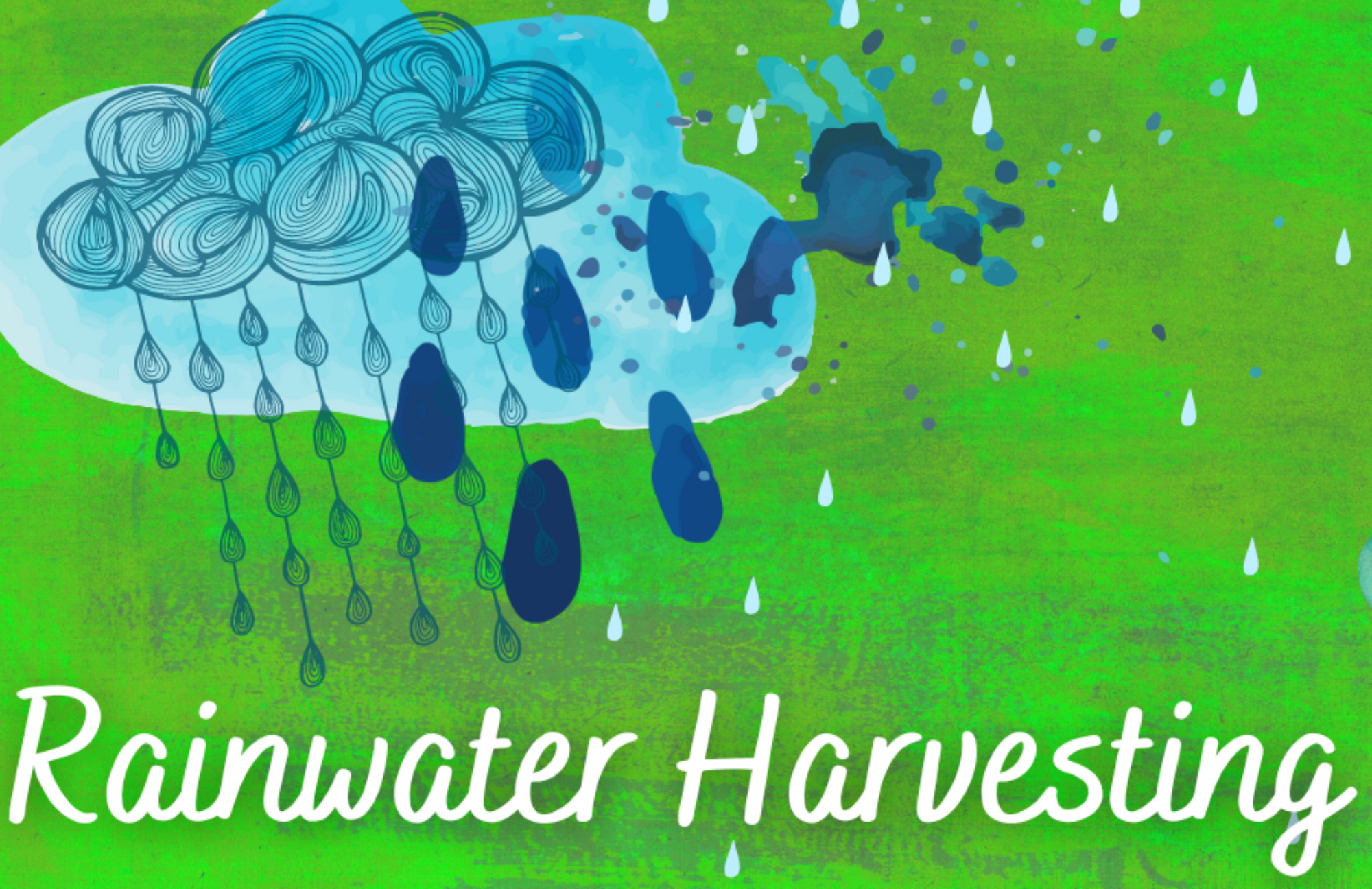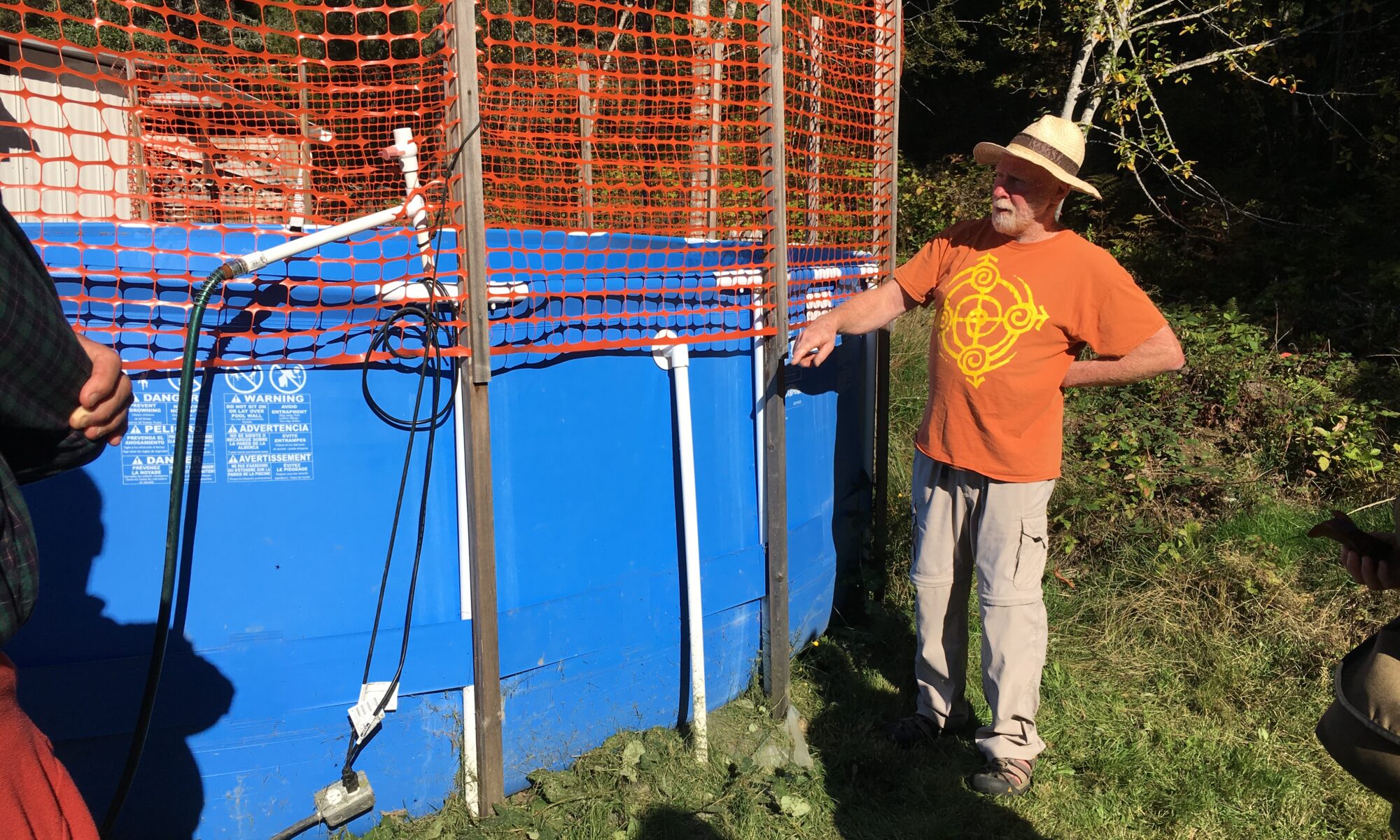Virtual Rain Tour – Site 2 – 155 Wildwood
Brief System Description:
System Total Storage: 9,608 USG (36.369 litres, or 8000 imperial gallons)
Year established: 2016
Roof: Asphalt Shingles and Metal Roofing
Type: Non-potable
Use: Irrigation only
Alternative Sources: North Salt Spring Waterworks District
Q: When you established your system, did you design it to be built in stages or all at once? Did it occur as you planned?
A: All at once
I store 8000 Imperial gallons. I topped up twice during our long wet spring. My system is strictly non-potable use so I water the soil – not the plants. I avoid pouring stored water on the tomatoes or kale.
Q: Did you have professional support and if so, what elements required professional support for you? (design, roofing, water quality, installation, irrigation/water delivery, permitting, etc.)
A: No
Q: Were there any technical barriers for you to overcome? If yes, please describe in 50 words or less how you overcame them.
A: No
Q: Does being a rainwater harvester help you to conserve water in other ways or to be more environmentally practical?
A: I’m a better gardener, and I have good success because I no longer have a “don’t use too much water” mindset. I start the season with confidence that I can use as much water as the plants want.
I water heavily. Eight thousand gallons of stored water allows a generous garden plot, a family-sized greenhouse, fruit trees and ornamental flowers and shrubs in a half-acre lot, and generally, I have 4000 gallons left unused at the end of the season.
Q: What do you want to tell new users about the type of system that you have: pros, cons, what you would do differently?
A: I’m a DIY person, so all this stuff is second nature to me. I have what I want.
Q: Any other pearls of wisdom to impart that is not personal to any particular tradespeople and which might be useful to a new rainwater user on SSI?
A: Storing rainwater is so easy that I think step one is to estimate a demand budget and to plan a storage system that can store enough water. Said another way, unless cost factors or the physical limitations of the property are a concern, build big. I think the RWH tour is a good resource for someone starting out. This is a hard question to answer; the level of success (which is subjective) depends on the individual’s skillset, experience and budget, and if they need outside help – on the skills of the people they hire.
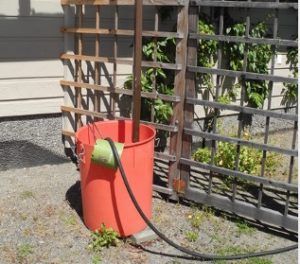
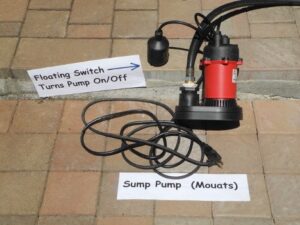
The sump pump and float switch sit Inside the garbage can. A garden hose connects the pump to your storage vessel.
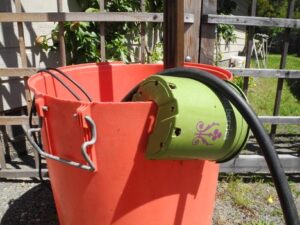
A modified plant pot keeps the garden hose from kinking at the rim.
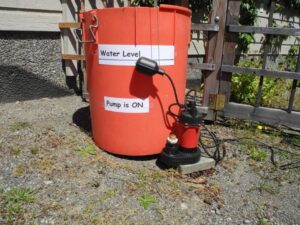
Demonstrating the way a sump pump with float-switch works!
Rain fills the garbage can. When the water is high enough, the floating switch turns the pump on. This moves the rain water to your storage vessel through the garden hose. In a heavy rain, the garbage can may overflow when it is filling faster than the pump can empty it.
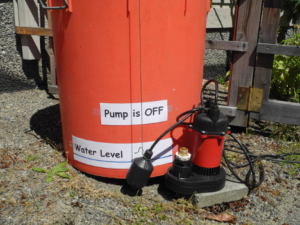
When the pump removes most of the water, the float switch turns the pump off until more water collects in the garbage can. This system is completely hands-off and operates automatically. Install a well-built wire-mesh or plywood lid on your collection container to keep pets and children out of the water and to avoid a risk of accidental drowning. Make sure there’s an air gap between the other end of the garden hose and the surface of the stored water; this avoids a siphon action backwards from your storage.
I’ve used this system for about ten years. My 8,000 imperial gallon storage fills to overflowing during the first two weeks of fall rain, so the potential for this small, simple system is huge. I generally let the roof and gutter system flush clean for the first few days of rain, and then I set up to begin harvesting.
The pump uses 110-v electricity, so be careful when connecting the pump to mains voltage. Avoid using an extension cord if you can, or use the shortest possible heavy-gauge extension cord. Remember that using a longer hose is more efficient than using a long extension cord.
I water heavily. Eight thousand gallons of stored water allows a generous garden plot, a family-sized greenhouse, fruit trees and ornamental flowers and shrubs in a half-acre lot, and generally, I have 4000 gallons left unused at the end of the season.
Here is another device that I built, which works at a different location where the water travels from the collection area to the storage area by gravity rather than by electric sump pump:
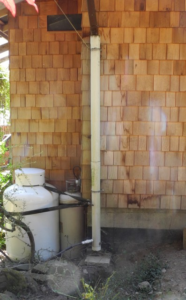
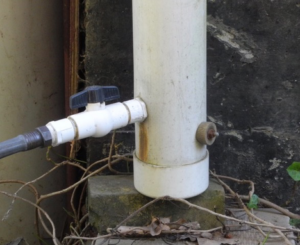
This downspout is made from 4” PVC pipe, with a cap glued onto the bottom. it could be made from 6” pipe. This device can lift water almost to the top of the white pipe, so if you have a storage tank that is lower than the top of the pipe, this thing will fill it with no pump required.
Clean-out is easy – simply close the valve, collect some water in the pipe, remove the garden hose and open the valve. Any unwanted material will flush out. The clean out plug showing on the right side is redundant.
This works because the weight of the vertical column of water pressurizes the garden hose – the more water in the pipe – the faster it flows through the hose. Again, it is possible for the pipe to overflow if the input is more than the hose can handle, so in some instances, an overflow pipe could be an asset.
This unit looks like it’s about 9’ high, so realistically, it could lift water four or five feet at the outlet end of the hose, depending on the length of the output hose. No noise; no moving parts. Fun with physics!
